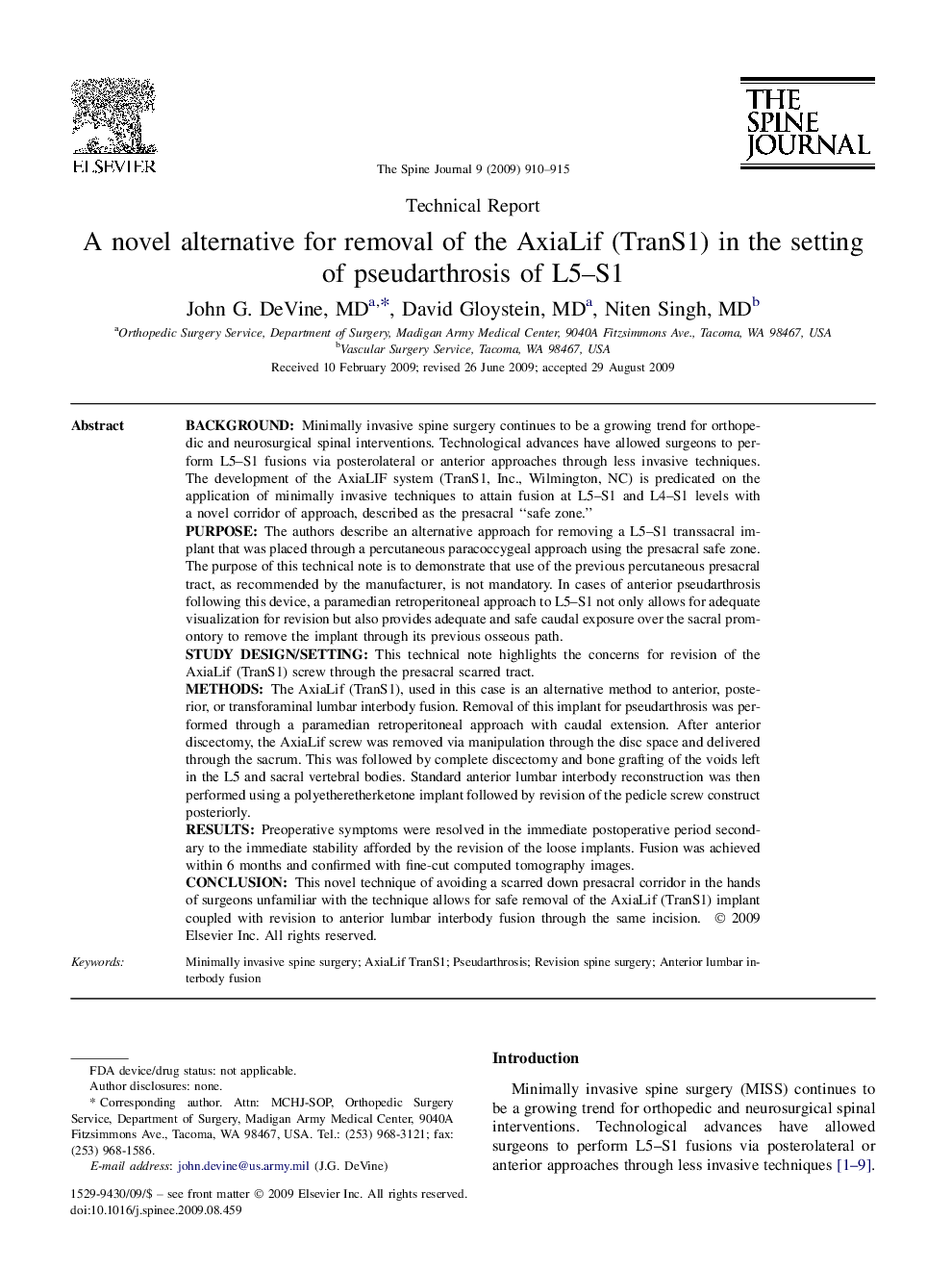| کد مقاله | کد نشریه | سال انتشار | مقاله انگلیسی | نسخه تمام متن |
|---|---|---|---|---|
| 4099433 | 1268640 | 2009 | 6 صفحه PDF | دانلود رایگان |

BackgroundMinimally invasive spine surgery continues to be a growing trend for orthopedic and neurosurgical spinal interventions. Technological advances have allowed surgeons to perform L5–S1 fusions via posterolateral or anterior approaches through less invasive techniques. The development of the AxiaLIF system (TranS1, Inc., Wilmington, NC) is predicated on the application of minimally invasive techniques to attain fusion at L5–S1 and L4–S1 levels with a novel corridor of approach, described as the presacral “safe zone.”PurposeThe authors describe an alternative approach for removing a L5–S1 transsacral implant that was placed through a percutaneous paracoccygeal approach using the presacral safe zone. The purpose of this technical note is to demonstrate that use of the previous percutaneous presacral tract, as recommended by the manufacturer, is not mandatory. In cases of anterior pseudarthrosis following this device, a paramedian retroperitoneal approach to L5–S1 not only allows for adequate visualization for revision but also provides adequate and safe caudal exposure over the sacral promontory to remove the implant through its previous osseous path.Study design/settingThis technical note highlights the concerns for revision of the AxiaLif (TranS1) screw through the presacral scarred tract.MethodsThe AxiaLif (TranS1), used in this case is an alternative method to anterior, posterior, or transforaminal lumbar interbody fusion. Removal of this implant for pseudarthrosis was performed through a paramedian retroperitoneal approach with caudal extension. After anterior discectomy, the AxiaLif screw was removed via manipulation through the disc space and delivered through the sacrum. This was followed by complete discectomy and bone grafting of the voids left in the L5 and sacral vertebral bodies. Standard anterior lumbar interbody reconstruction was then performed using a polyetheretherketone implant followed by revision of the pedicle screw construct posteriorly.ResultsPreoperative symptoms were resolved in the immediate postoperative period secondary to the immediate stability afforded by the revision of the loose implants. Fusion was achieved within 6 months and confirmed with fine-cut computed tomography images.ConclusionThis novel technique of avoiding a scarred down presacral corridor in the hands of surgeons unfamiliar with the technique allows for safe removal of the AxiaLif (TranS1) implant coupled with revision to anterior lumbar interbody fusion through the same incision.
Journal: The Spine Journal - Volume 9, Issue 11, November 2009, Pages 910–915